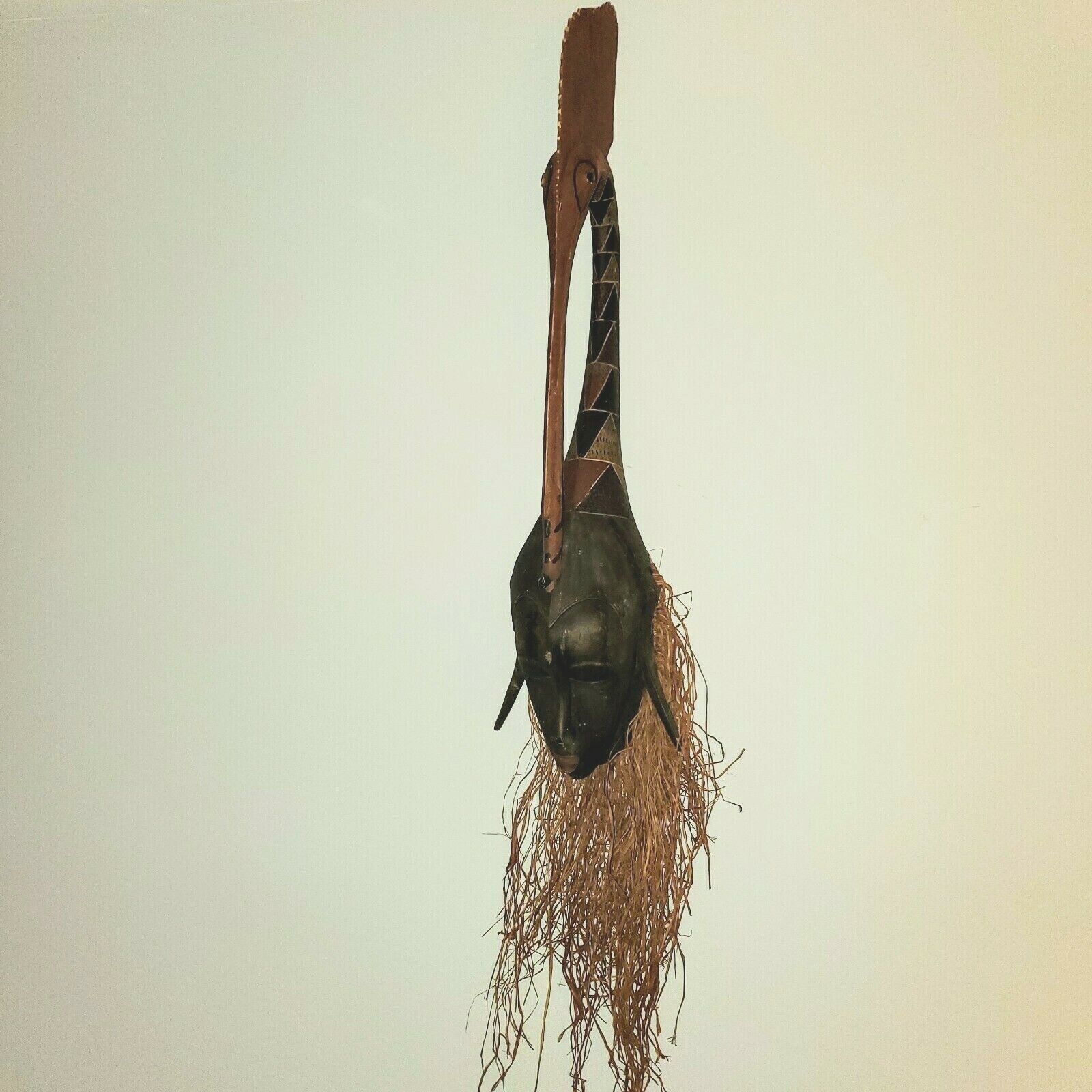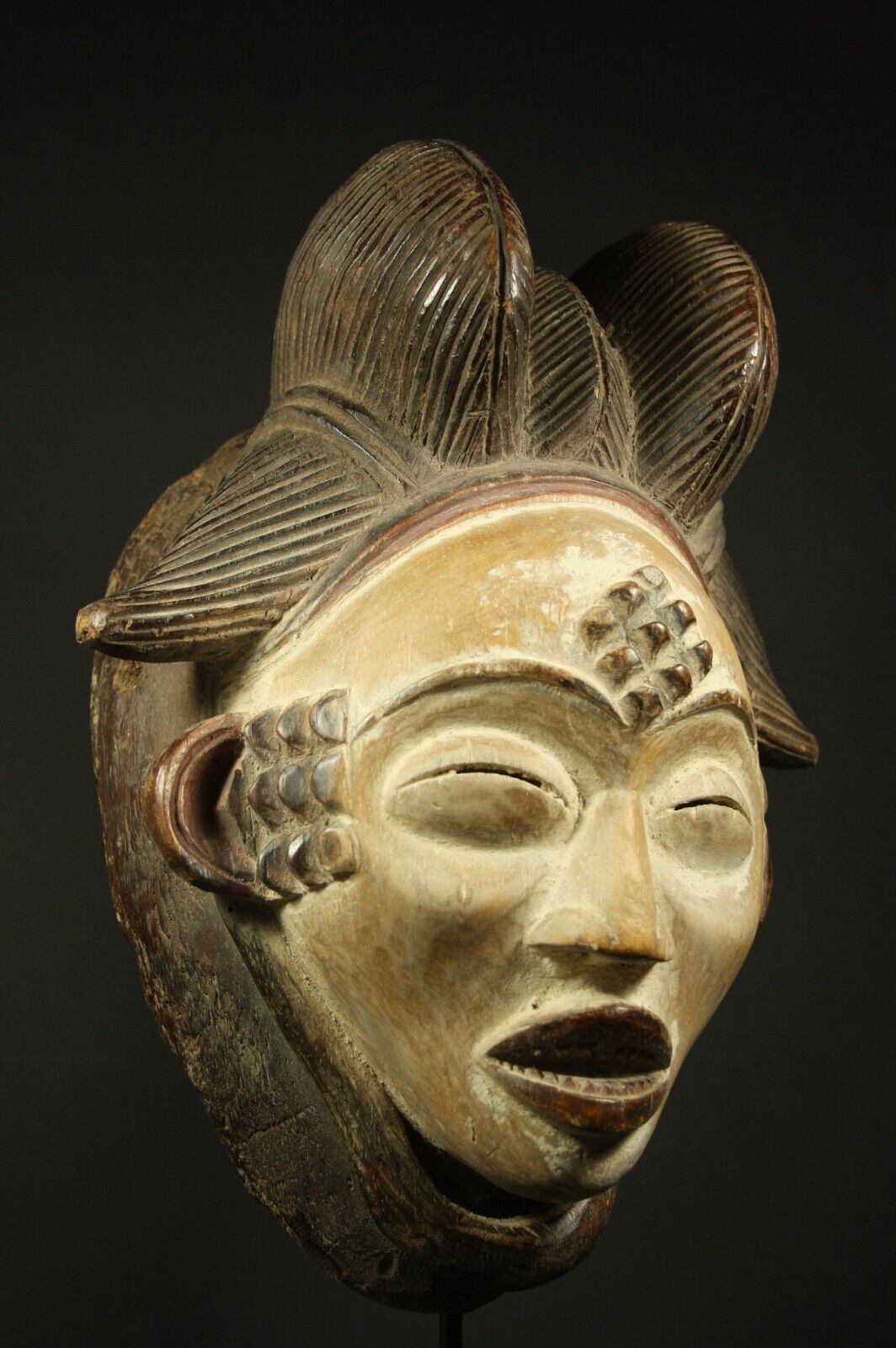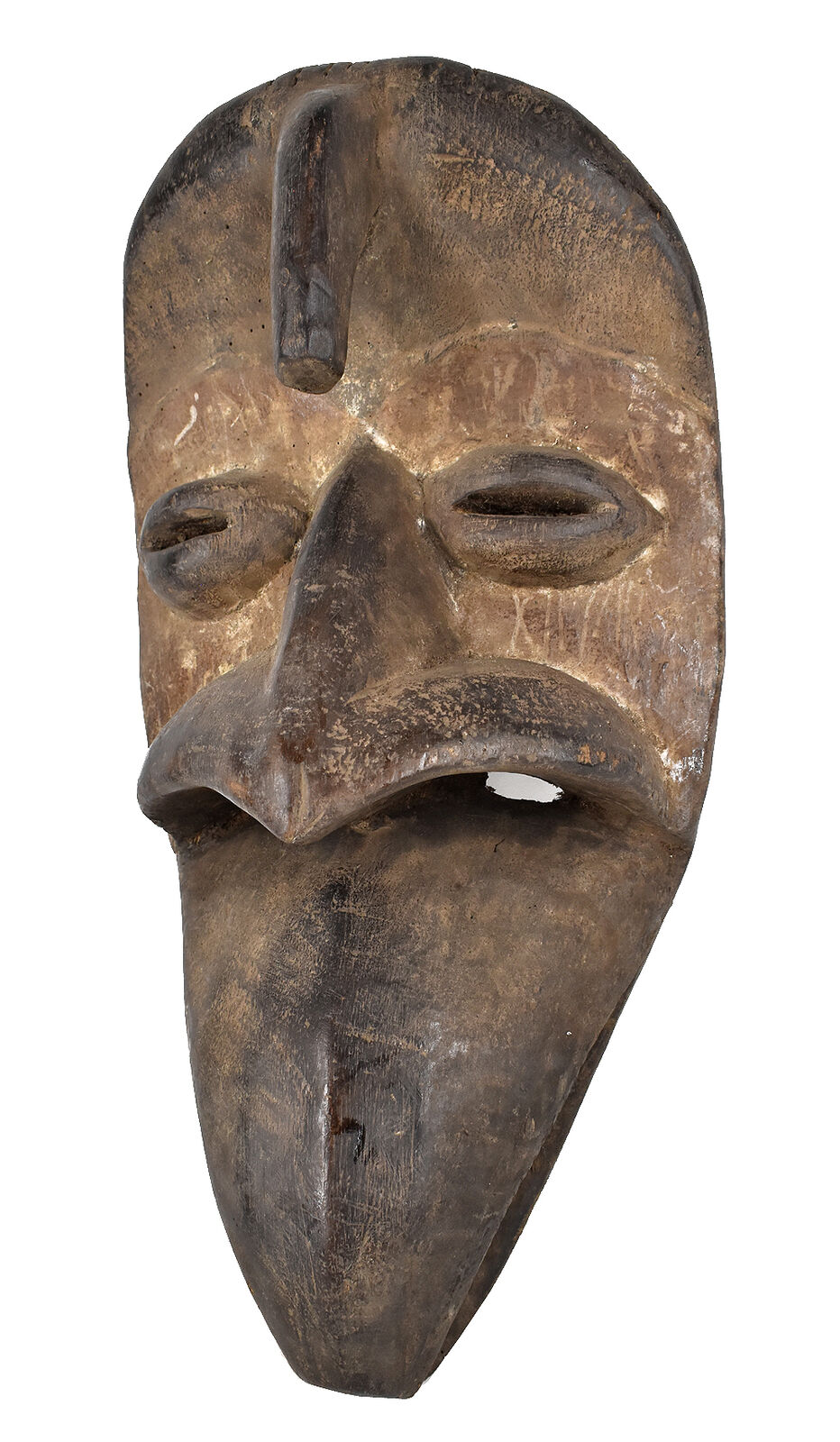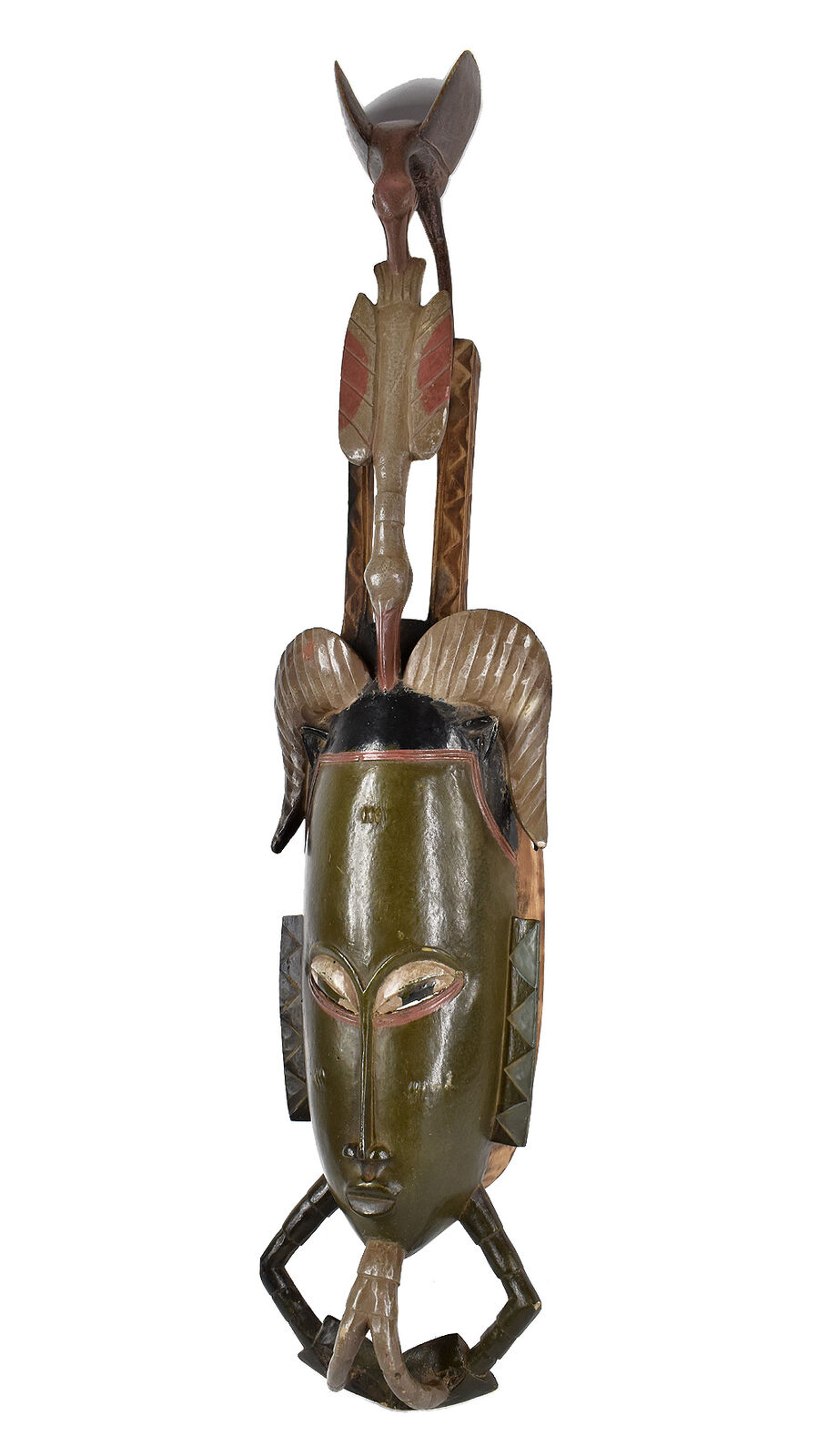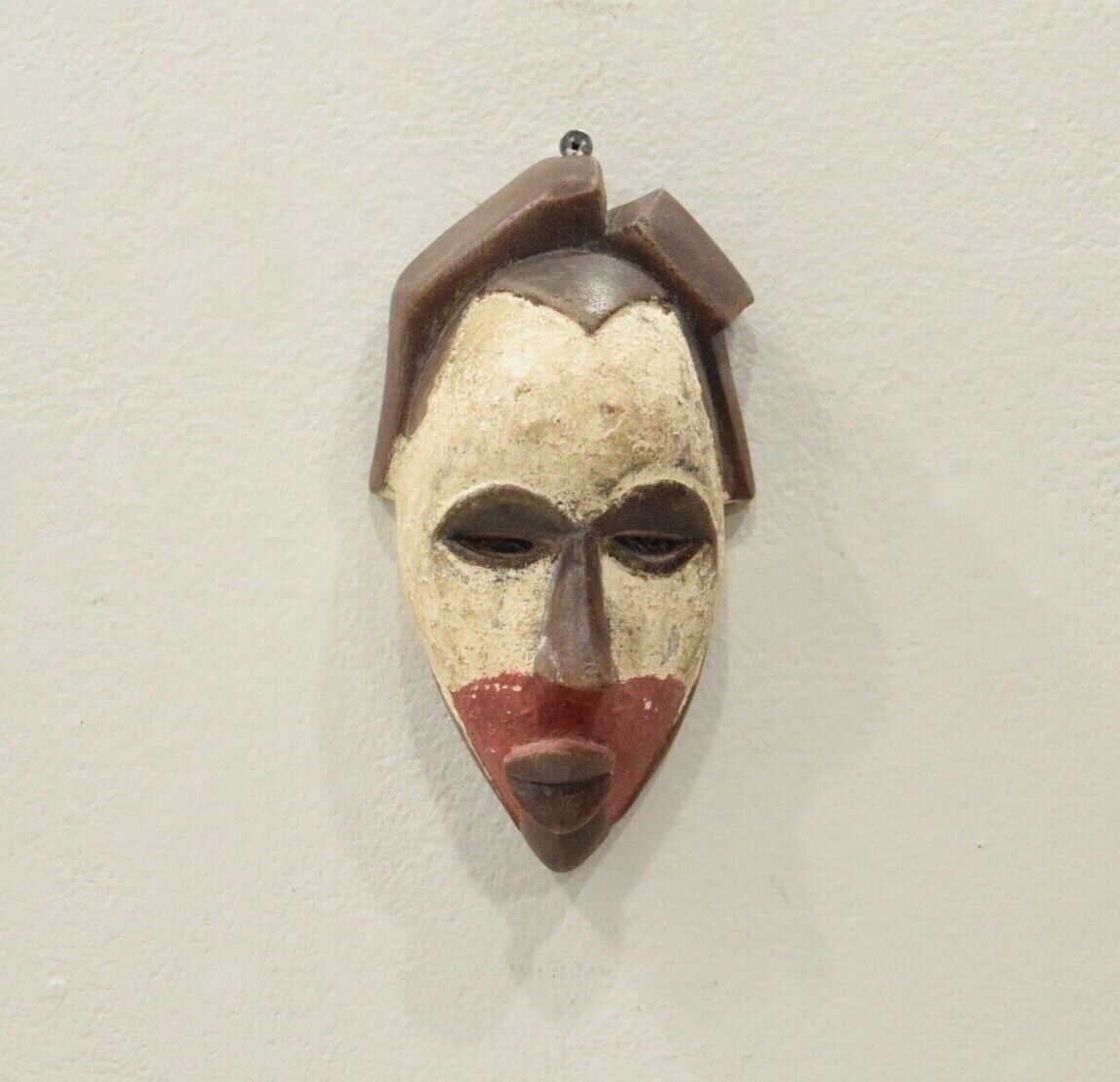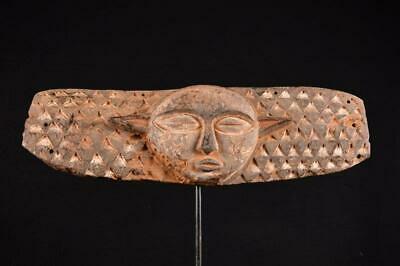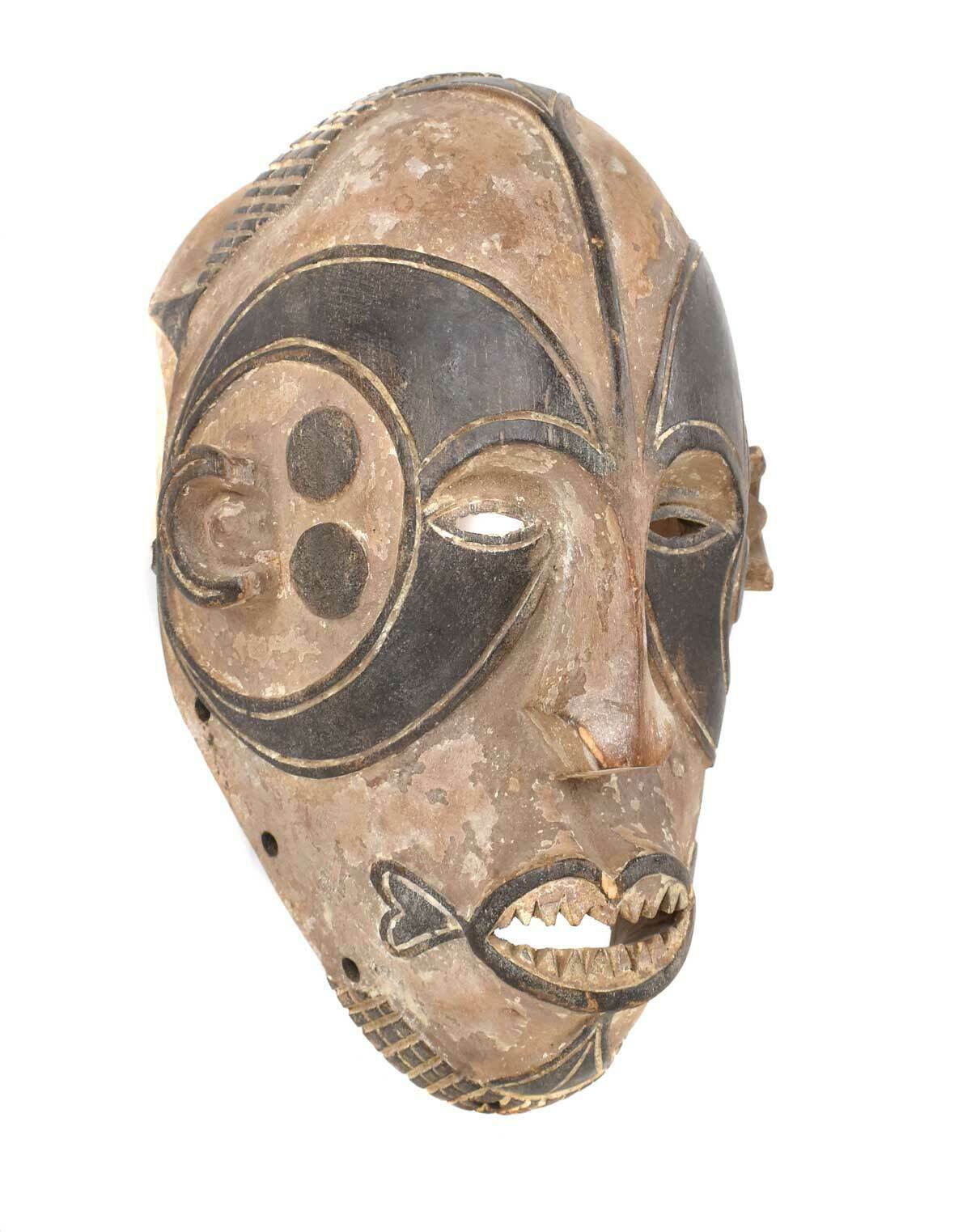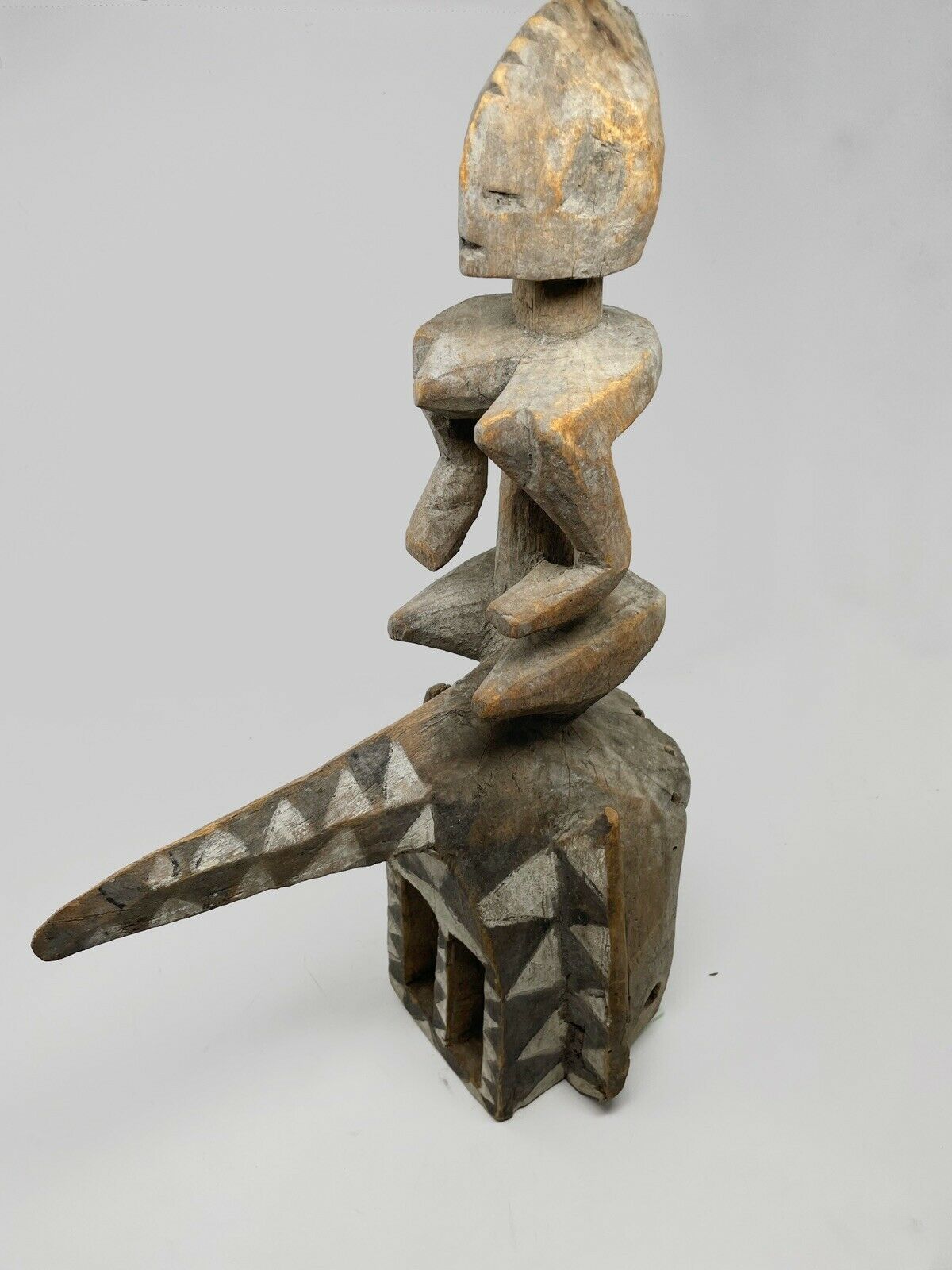-40%
Large Rare Old Fine Baule Mask - Côte d'Ivoire / Ivory Coast
$ 205.39
- Description
- Size Guide
Description
Old Fine Baule Mask - Côte d'Ivoire / Ivory Coast.Old Fine Baule Mask - Côte d'Ivoire / Ivory Coast
~70s. Carved hard wood. 36" high (not counting grass at bottom at add at least 12") x 10" width x 9.5" depth and ~ 4 pounds.
The Baule are an Akan people and one of the largest groups in Côte d’Ivoire who historically migrated from Ghana.
Legend goes that in the 17th century the Baoulé left present day Ghana and traveled west into present day Côte d’Ivoire under the lead of the Queen Pokou. According to oral tradition, the Baoulé were forced to leave Ghana when the Ashanti rose to power. While they were fleeing for their lives they came to the Komoe river which they were unable to cross. With their enemies chasing them they began to throw their most prized possessions into the river. It came to the Queen’s attention that their most valuable possession was her son. The Queen realized that she had to sacrifice her son to the river and threw him in. Upon doing so hippopotami rose from the river and allowed them to cross, saving their lives. After crossing, the Queen was so upset about losing her son that all she could say was “baouli,” meaning: the child is dead. From that point on they were known as the Baoulé.
Type of Object Mask
Country of Origin Cote d'Ivoire People Yaure/Guro
Materials Wood, pigment
Overall ConditionGood.
Most of our pieces have spent decades on at least two continents, and have been treasured by several owners. Small splits, scrapes and cracks are a normal part of their patina attesting to their age and extensive use.
Additional Information: The Guro of the Ivory Coast (Cote D'Ivoire) are related to the Baule, and there is a resemblance in their masks. The daily life of the Guro is dominated by secret societies called "zuzu". Guro masks are elegant, usually long with pointed chins, and generally the most colorful of African masks. Sometimes there are burn marks on them. They are often repainted, so layers of paint are not uncommon. Such masks were danced in various ceremonies. They belong to the category of Je masks and are the first to appear to warm up the audience prior to the appearance of the anthropomorphic masks, considered to be the most important during the performance.
